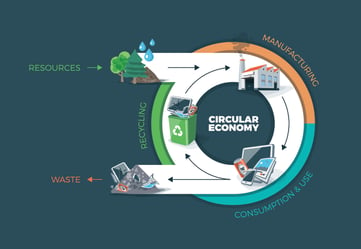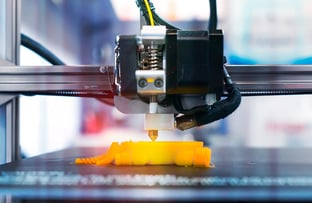 In today’s world, technology is always changing. As a result, there are many innovative technologies that have an impact on the manufacturing industry. Three of the innovative technologies currently trending in the manufacturing industry include nano manufacturing, sustainable manufacturing and additive manufacturing. Let’s look at a brief overview of what these are and what kind of role they play in manufacturing.
In today’s world, technology is always changing. As a result, there are many innovative technologies that have an impact on the manufacturing industry. Three of the innovative technologies currently trending in the manufacturing industry include nano manufacturing, sustainable manufacturing and additive manufacturing. Let’s look at a brief overview of what these are and what kind of role they play in manufacturing.
Nanomanufacturing
The term nanomanufacturing has emerged as the manufacturing industry adopts nanotechnology. Nanomanufacturing refers to the methods the manufacturing industry is using to make the advanced materials and devices enabled by nanotechnology. Nanomanufacturing is both the production of nanoscaled materials and the manufacturing of parts
"bottom up" from nanoscaled materials or "top down" in smallest steps for precision. Nanomanufacturing is the industrial-scale manufacture of nanotechnology-based objects, with a focus on keeping costs as low as possible and products as well-crafted as possible. Nanomanufacturing is really processes that control assembly at the nanoscale to produce unique devices and materials.
Nanomanufacturing enables the creation of new materials and products that have applications such as material removal processes, device assembly, medical devices, and electrostatic coating and fibers. Nanomanufacturing is a relatively recent branch of manufacturing. Research in nanomanufacturing, unlike traditional manufacturing, requires collective effort, such as collaboration between mechanical engineers, biologists, chemists, and material  scientists.
scientists.
Nanomanufacturing can generally be broken down into two categories: top-down and bottom-up approaches. Top-down nanomanufacturing uses the addition or removal of layers to build devices or electronics. Top-down fabrication reduces large pieces of materials all the way down to the nanoscale. It requires larger amounts of materials and can lead to waste depending upon how excess material is handled. Bottom-up nano manufacturing is where material or complexes are assembled through natural forces and self-organization. The bottom-up approach creates products by building them up from atomic- and molecular-scale components.
Great examples of nanomanufacturing are microprocessors and semiconductors.
Sustainable Manufacturing
Sustainable manufacturing is defined by the US Department of Commerce as
"the creation of manufactured products that use processes that minimize negative environmental impacts, conserve energy and natural resources, are safe for employees, communities, and consumers and are economically sound.”
 Sustainable manufacturing is a business practice within the industrial sector, which relates all a company’s processes into the social and natural environments it operates in and affects. The goal is to have a neutral or positive impact, while still reaching a high level of advancement and profitability. This practice is meant to continue technological advances while protecting future generations by making sure the human footprint does not exceed the Earth’s capacity to sustain its effects.
Sustainable manufacturing is a business practice within the industrial sector, which relates all a company’s processes into the social and natural environments it operates in and affects. The goal is to have a neutral or positive impact, while still reaching a high level of advancement and profitability. This practice is meant to continue technological advances while protecting future generations by making sure the human footprint does not exceed the Earth’s capacity to sustain its effects.
There are many decisions that are made in manufacturing operations today that will have far reaching effects for future generations. This series of decisions, changes and adjustments to thought processes are the basis of sustainable manufacturing.
Additive Manufacturing
Additive manufacturing, often referred to as 3D printing, is an approach to industrial production that enables the creation of lighter, stronger parts and  systems. 3D printing was a technological advancement that was made possible by the transition from analog to digital processes. It brings digital flexibility and efficiency to manufacturing operations. It uses a computer-created design, using software such as CAD or 3D object scanners, to direct hardware to layer filament into a precise shape. It is known as additive manufacturing because it adds material in order to create an object. When creating an object by other manufacturing processes, it is often necessary to remove material during the machining process.
systems. 3D printing was a technological advancement that was made possible by the transition from analog to digital processes. It brings digital flexibility and efficiency to manufacturing operations. It uses a computer-created design, using software such as CAD or 3D object scanners, to direct hardware to layer filament into a precise shape. It is known as additive manufacturing because it adds material in order to create an object. When creating an object by other manufacturing processes, it is often necessary to remove material during the machining process.
Additive manufacturing includes 3D printing as well as rapid prototyping. Although these terms are often used interchangeably with additive manufacturing, each process is a subset of additive manufacturing. Additive manufacturing has been around for decades and provides unique manufacturing opportunities in many industries.
For information about how Radwell can support your manufacturing operation

